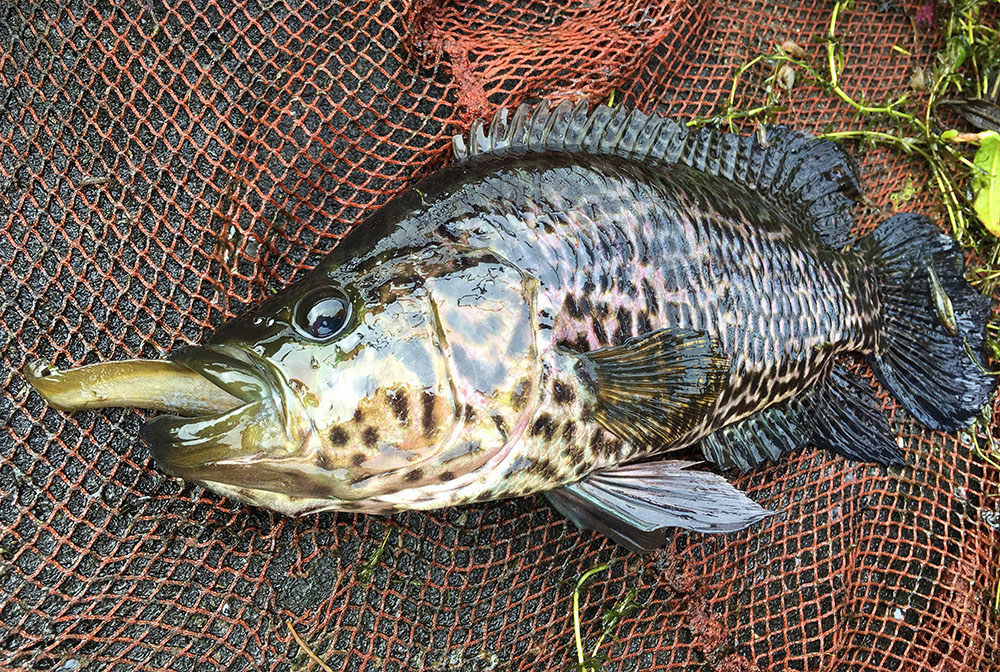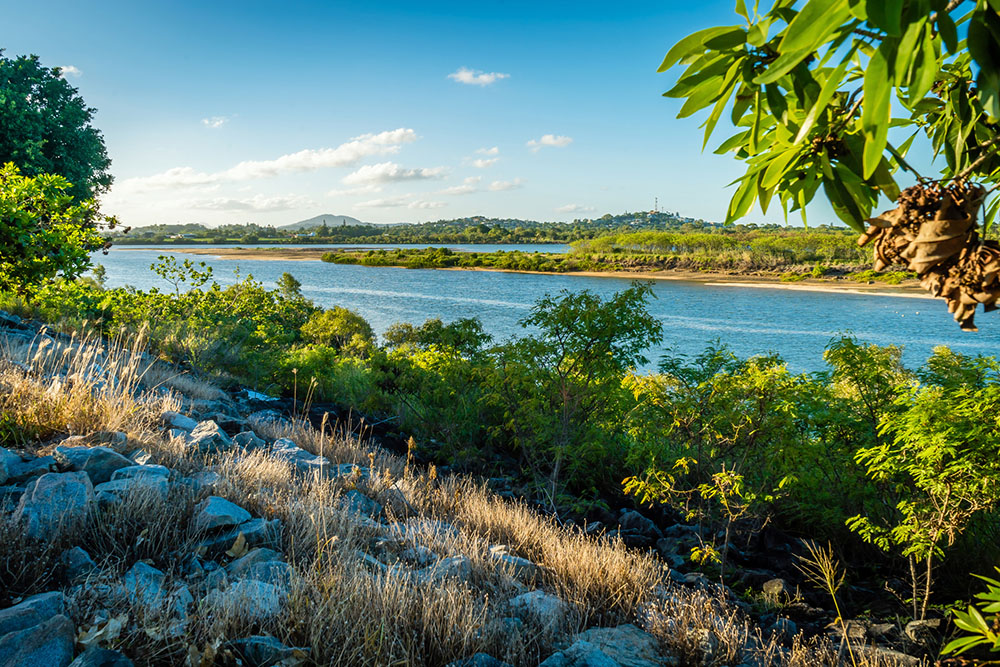A highly aggressive and invasive fish species that preys on native fish has been found to have a much wider spread in a major northern Queensland waterway than previously thought.
- The jaguar cichlid has spread to Fursden, Lagoon, McCreadys, Bakers and Sandy creeks and the Gooseponds
- The fish is threatening vulnerable native freshwater fish and grows to 45cm
- It is most likely someone released their aquarium fish into the waterway
QUT masters research student Michael Mottley used environmental DNA (eDNA) analysis to detect the aquarium escapee, the jaguar cichlid, in Mackay's Pioneer River and its creeks and that it had breached up-river weirs to threaten already vulnerable native freshwater species.
Mr Mottley said eDNA analysis was done from water samples that contain traces of mitochondrial DNA that is left from scales or excrement shed in the water by the jaguar cichlid, so it is not actually necessary to see the fish to know that it is present.
"This species was first found in Fursden Creek in 2014 and it is thought it entered the waterways by being released from an aquarium," Mr Mottley said.

"The jaguar cichlid, so named for its black blotches, remains small in an aquarium but grows up to 45cm in freshwater rivers and lakes.
"It is classed as a noxious fish as it is highly aggressive and feeds on native fish, their young and their eggs.
"As an aquarium fish, there are only a few equally aggressive species that could live in its tank without being eaten.
"The public could distinguish the jaguar cichlid not only from the markings but also by its single dorsal fin. Native species of similar shape to the jaguar cichlid have two dorsal fins."
Mr Mottley said his research mapped the distribution of the cichlid.
"We found this fish had crossed the weirs upstream so someone might have released them upriver, or they were carried by floodwaters."
QUT ecological scientist Dr David Hurwood said: "We need to know their distribution and abundance for management.
"Eradication is difficult but we can try to stop the spread through early detection and by alerting the public to its presence."

Mackay Regional Pest Management Group member and Catchment Solutions ecologist Trent Power said they were surprised to detect jaguar cichild DNA above Dumbleton Weir, given that the fishway had not been working for almost a decade and the weir was impassable even during severe floods.
"It's highly likely that someone has released the fish upstream at some stage. Often, it's members of the public who inadvertently collect pest fish from the wild for their aquarium, then release the fish back into the wild when they don't want to keep fish anymore.
"If the release location is in a different waterway or a different part of the catchment then a new population can establish.
MRPMG, Reef Catchments and Mackay Regional Council have supported this research which began in 2020.
MRPMG member and Mackay Regional Council officer Shelley Molloy said the jaguar cichlid poses an ongoing risk to native fish communities and the best defence was to prevent their spread to new waterways.
"The Mackay Regional Pest Management Group urges people to become familiar with its appearance, particularly those who collect fish for aquariums," she said.
"Please do not release unwanted aquarium fish into waterways. You should return the fish to the place of purchase or take the fish to an appropriate authority."
Members of the public can surrender suspected noxious fish by contacting the Department of Agriculture and Fisheries on 13 25 23 or their local council.
Mr Mottley's eDNA results showed the noxious fish had spread from Fursden Creek to Lagoon Creek and the Gooseponds. Jaguar ciclid DNA was also detected in McCreadys Creek, Bakers Creek, Sandy Creek and the Pioneer River above Dumbleton and Marian weirs.






